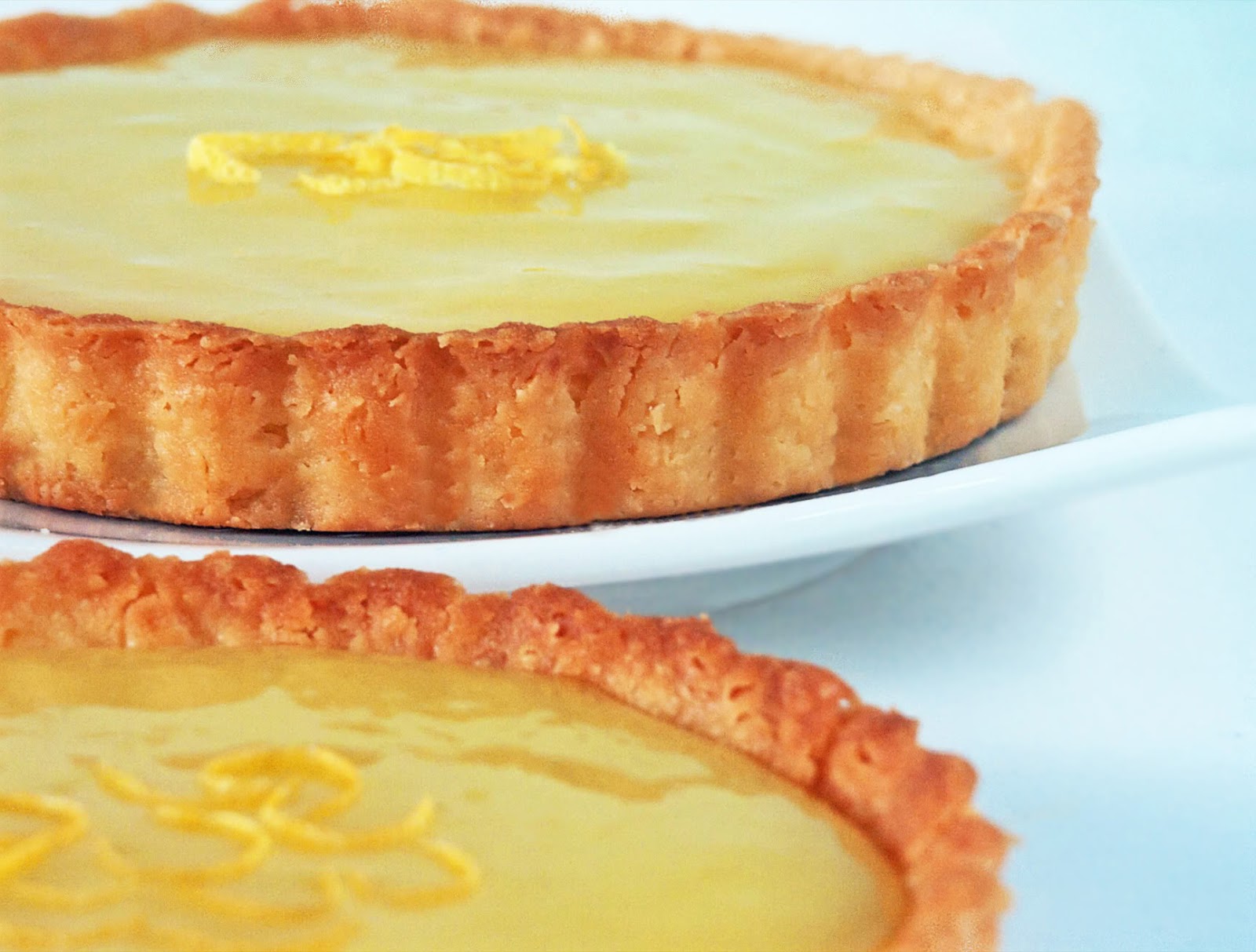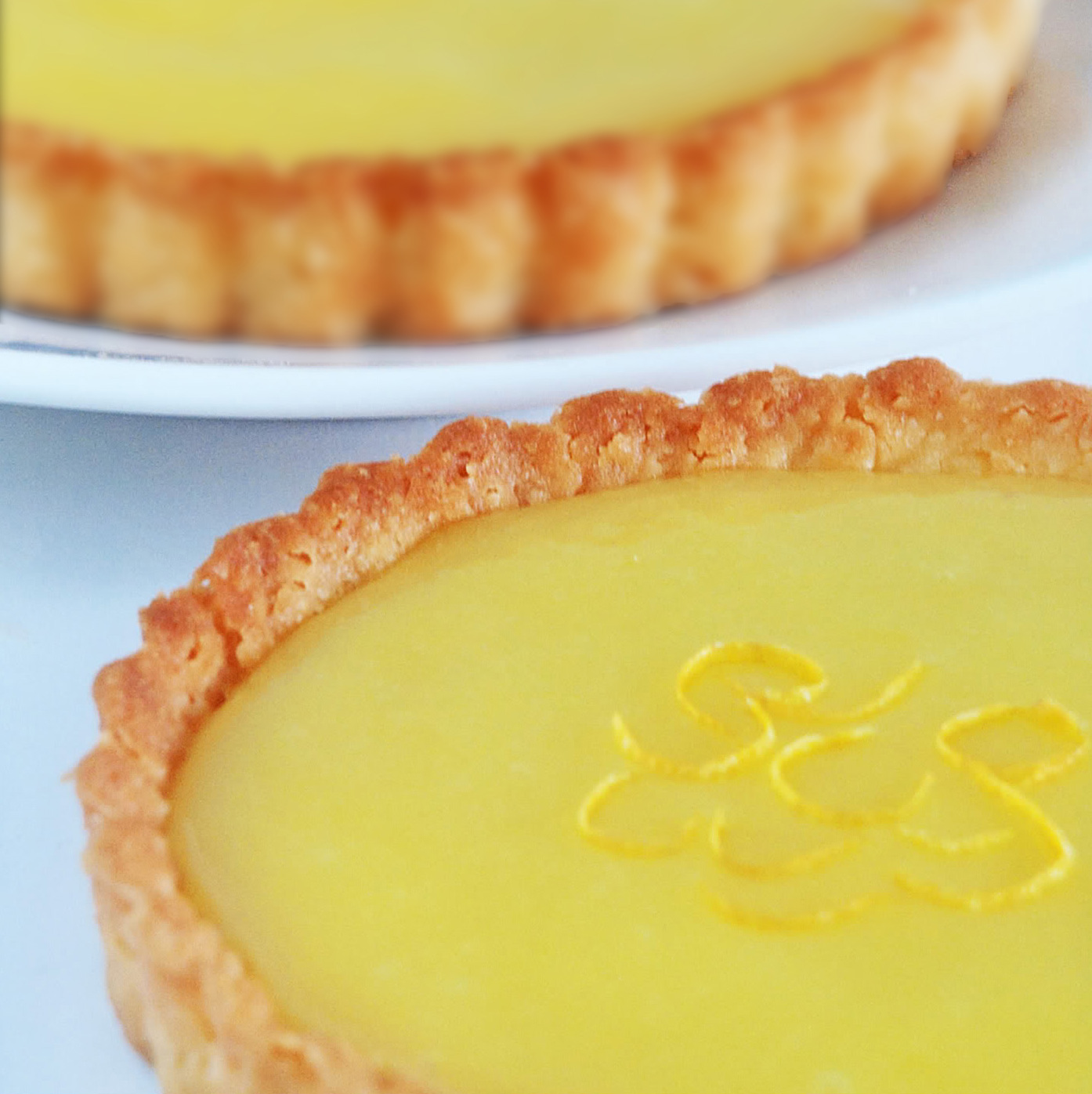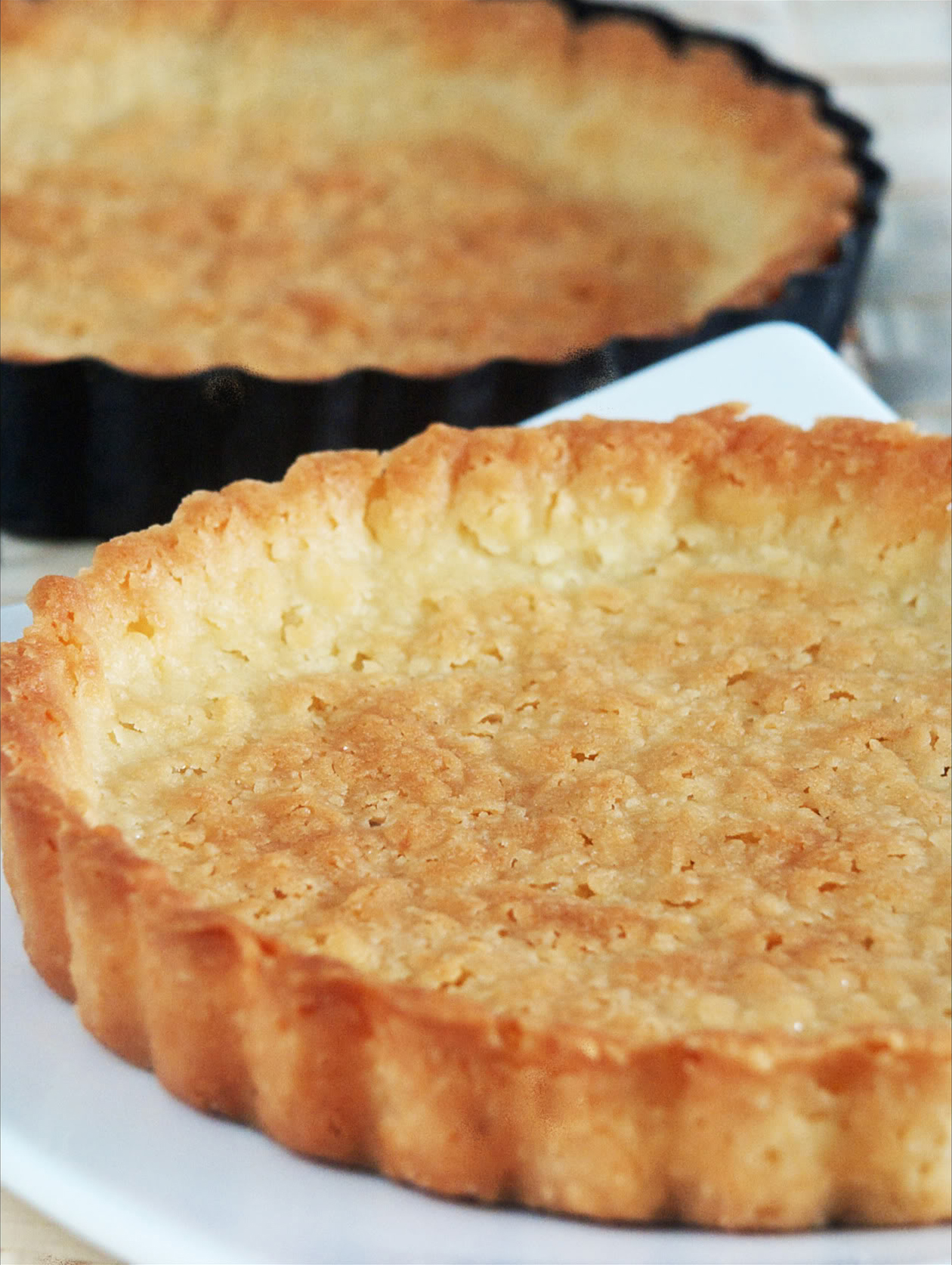Lemon Tarts

When life gives you lemons, make lemon tarts. They’re much better than lemonade.
If you don’t have free lemons from life, go buy some. Lemon tarts are worth it.
My lemon tarts are very lemony and tart. There’s about half a lemon in each small tart.
If you like lemon tarts that aren’t tart, this isn’t the recipe for you. My tarts aren’t for lemon wimps.
Are you a lemon fiend?
If you are, my sunshine yellow tarts will give you a lemon high. Just one bite will make your eyes spring wide open with a “Ding!”
The best thing about homemade lemon tarts is the homemade lemon curd. Eaten on the day it’s made, it has a tartness that’s really refreshing.
After resting in the fridge for a night, the tartness mellows. The curd becomes less sharp and more rounded. Mellow homemade curd is still very good and way better than those that are commercially produced.
Good lemon curd needs to go with good pastry. Mine is very buttery and very flakey. It’s the perfect partner for the silky smooth filling.
The pastry I use doesn’t need a rest before it’s rolled and baked. The lemon curd is cooked separately on the stove. The cooked filling is poured into baked pastry shells and that’s it, the tarts are done. This method is a lot quicker than prebaking the pastry shells, then baking the lemon curd in the prebaked tart shells.
Lemon tarts are good any day. Don’t wait till life gives you lemons.

Lemon Tarts
Ingredients
Pastry shells
- 90 g unsalted butter
- 1 tbsp vegetable oil
- 3 tbsp water
- 1 tbsp sugar
- ⅛ tsp salt
- 150 g plain flour
Lemon curd
- 50 g unsalted butter
- 100 g sugar
- 105 g lemon juice from 2-3 lemons
- 2 eggs remove chalazea
- ½ tsp corn flour
- 1 tsp grated lemon zest
Instructions
Make pastry shells
- Preheat oven to 210°C (410°F). Put unsalted butter, vegetable oil, water, sugar and salt in a pot. Over medium heat, stir till colour darkens around the edges, about 5 minutes. Turn off heat.90 g unsalted butter, 1 tbsp vegetable oil, 3 tbsp water, 1 tbsp sugar, ⅛ tsp salt
- Tip flour into pot. Stir till thoroughly mixed.150 g plain flour
- When cool enough to handle, divide dough between tart moulds with removable bottoms, using about 60 g per mould. Reserve a small piece for patching up cracks after baking. Pat and press dough to form a thin, even layer.
- Bake tart shells till golden brown, about 10 minutes. Remove from oven and patch up cracks if any. Flatten some reserved dough as much as possible between fingers. Press gently over holes for a few seconds once tarts are removed from oven.
Make lemon curd
- Heat butter, sugar and lemon juice in a non-reactive pot till melted. Slowly add mixture to eggs whilst stirring eggs with a spatula.50 g unsalted butter, 100 g sugar, 105 g lemon juice from 2-3 lemons, 2 eggs
- Add cornflour and lemon zest to egg mixture. Stir till evenly mixed.½ tsp corn flour, 1 tsp grated lemon zest
- Put egg mixture in pot. Heat using lowest setting possible, holding pot so that only half is on the stove. Keep scraping sides and bottom whilst stirring. If eggs start curdling, remove pot from stove. Keep stirring/scraping. Heat again after cooling down a bit. Curd is ready when it coats spatula, about 10 minutes.
- Taste and adjust with a bit of sugar or lemon juice if necessary. Remove from stove. Continue stirring to dissipate residual heat, 2-3 minutes.
Assemble and serve
- Divide lemon curd between pastry shells. Level and smooth top. Decorate with lemon zest, lemon slices or gold flakes. Cover (to prevent skin from forming) till curd is fully set, 10-15 minutes. Unmould and serve. Or keep chilled and covered in the fridge till ready.
- When unmoulding, bottom of tart must always rest on a flat surface. Do not attempt to hold unmoulded tart in your hands. It would just crumble to bits.
- To store, keep assembled tarts chilled for up to 2 days. Beyond that, curd may weep and soften pastry. Filling and shells may be kept separately and assembled just before serving. However, curd would have set so there wouldn’t be a ‘mirror effect’ unless it’s glazed.